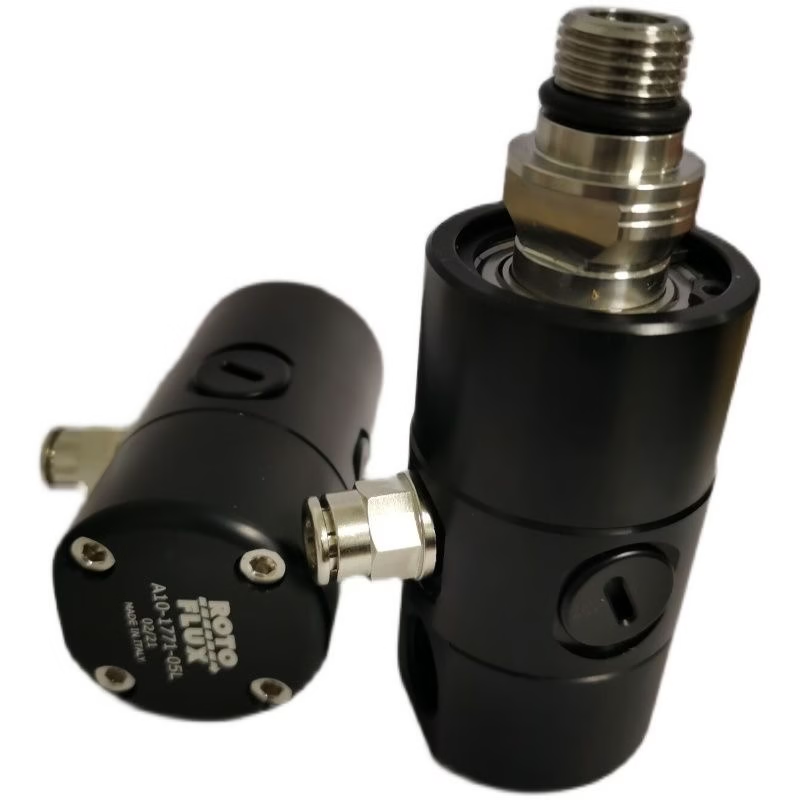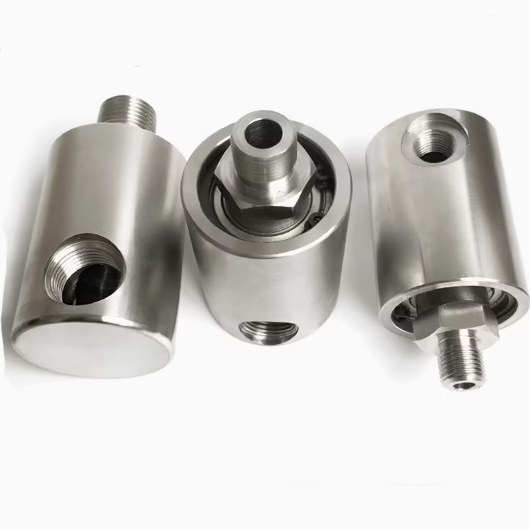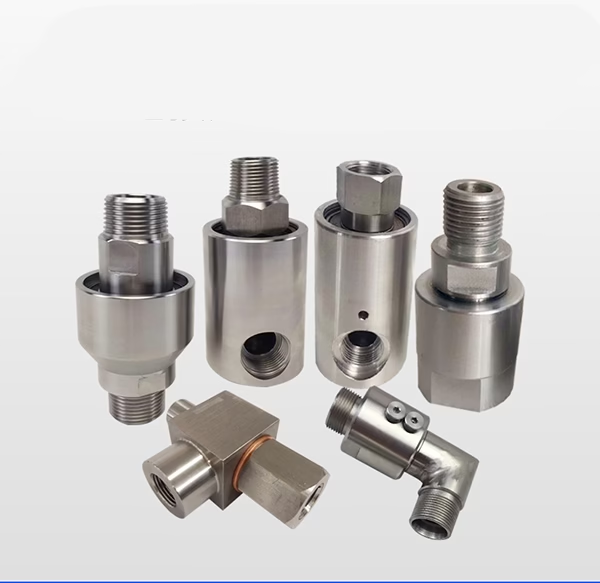What are the fundamentals behind rotary mechanical seals
Introduction
In industrial machinery, where reliability and efficiency are paramount, rotary mechanical seals play a crucial role. I’ve observed many searches for “What are the fundamentals behind rotary mechanical seals?”. This indicates a strong demand among engineers, maintenance professionals, and enthusiasts to understand the core principles of these essential components.
In this comprehensive blog post, we’ll delve deep into the world of rotary mechanical seals. Exploring their key elements, working mechanisms, applications, and maintenance requirements. By the end, you’ll have a thorough grasp of the fundamentals. Enabling you to make informed decisions and optimize content related to this topic for better search rankings.
Introduction to Rotary Mechanical Seals
Rotary mechanical seals are devices designed to prevent the leakage of fluids (liquids or gases) between a stationary and a rotating component in machinery. They are widely used in various industries, including manufacturing, oil and gas, chemical processing, power generation, and water treatment. Unlike traditional packing seals, which rely on compression to create a seal. Mechanical seals use a combination of stationary and rotating components to achieve a tight, leak-proof barrier.
The importance of rotary mechanical seals cannot be overstated. A failure in a mechanical seal can lead to fluid leakage. Which not only results in the loss of valuable resources but also poses safety hazards and environmental risks. For example, in a chemical plant, a leaking mechanical seal could release hazardous chemicals, potentially causing harm to workers and the surrounding environment. Additionally, seal failures can lead to costly downtime for repairs and maintenance. Disrupting production schedules and affecting a company’s bottom line.
Key Components of Rotary Mechanical Seals
To understand the fundamentals of rotary mechanical seals, it’s essential to familiarize ourselves with their key components. Each part plays a vital role in the seal’s operation and performance.
Stationary Face
The stationary face is one of the primary components of a mechanical seal. Manufacturers typically make it from hard materials such as carbon graphite, silicon carbide, or tungsten carbide. This face remains fixed relative to the housing of the machinery. And forms a sealing surface that mates with the rotating face. The stationary face is often mounted on a stationary sleeve or directly onto the housing using a retainer or gland. Its main function is to provide a smooth, flat surface. That creates a seal when in contact with the rotating face.
Rotating Face
The rotating face, as the name suggests, rotates with the shaft of the machinery. Like the stationary face, it from durable materials capable of withstanding high pressures, temperatures, and friction. The rotating face is usually to the shaft using a drive mechanism, such as a key or a set screw. As the shaft rotates, the rotating face rubs against the stationary face, creating a thin film of fluid between them. This fluid film acts as a lubricant, reducing friction and wear between the two faces.
Spring Assembly
The spring assembly in a mechanical seal provides the necessary force to keep the stationary and rotating faces in contact. Springs can made from various materials, includingstainless steel or alloy steel, and come in different configurations. Such as single-spring or multi-spring setups. The spring force ensures that the sealing faces maintain proper contact even under varying operating conditions. Such as changes in pressure or temperature. It also compensates for wear and tear on the sealing faces over time. Ensuring a continuous and effective seal.
Secondary Seals
Secondary seals, often in the form of O-rings or gaskets, play a crucial role in preventing leakage along the periphery of the stationary and rotating faces. They create a seal between the components of the mechanical seal and the housing or shaft, preventing fluid from bypassing the primary sealing faces. O-rings are commonly use as their simplicity, cost-effectiveness, and ability to provide a reliable seal in a wide range of operating conditions. Gaskets, on the other hand, in applications where require more robust seal, such as in high-pressure or high-temperature environments.
Drive Mechanism
The drive mechanism transfers the rotational motion of the shaft to the rotating face of the mechanical seal. It ensures that the rotating face rotates at the same speed as the shaft, maintaining proper alignment and contact with the stationary face. Different types of drive mechanisms are available, including keyed connections, tang-and-slot arrangements, and interference fits. The choice of drive mechanism depends on factors such as the size and speed of the shaft, the operating conditions of the machinery, and the required level of torque transmission.
Working Principle of Rotary Mechanical Seals
Now that we understand the key components, let’s explore how rotary mechanical seals work. The operation of a mechanical seal is based on the principle of creating a thin film of fluid between the stationary and rotating faces, which acts as a barrier to prevent leakage.
Assembly and Installation
When assembling a mechanical seal, technicians carefully install each component, ensuring proper alignment and tight connections. They mount the stationary face onto the housing or stationary sleeve, making sure it is perpendicular to the shaft axis. The rotating face to the shaft using the drive mechanism, and the spring assembly is apply the correct amount of force. Finally, the secondary seals are prevent leakage along the outer edges of the seal components.
Initial Contact and Sealing
Once the mechanical seal is installed and the machinery starts operating, the spring force presses the stationary and rotating faces together. As the shaft rotates, the rotating face begins to rub against the stationary face. Initially, there is direct contact between the two faces, but as fluid enters the sealing area, a thin film forms between them. This fluid film is crucial for the operation of the seal, as it reduces friction and wear, while also preventing leakage.
Fluid Film Formation and Maintenance
The fluid film between the sealing faces is typically only a few microns thick. Its formation depends on several factors, including the type of fluid being sealed, the operating pressure and temperature, and the surface finish of the sealing faces. In most cases, the fluid film is created by the hydrodynamic action of the rotating face. As the face rotates, it shears the fluid, creating a pressure gradient that lifts the rotating face slightly off the stationary face, forming a thin film.
To maintain the fluid film, it’s essential to ensure a continuous supply of fluid to the sealing area. This can achieve through various methods, such as using a flush system, which introduces clean fluid into the seal chamber to cool and lubricate the sealing faces. In some applications, the fluid being seal itself provides sufficient lubrication, but in others, an external flush fluid may be required.
Pressure and Temperature Effects
Operating pressure and temperature have a significant impact on the performance of rotary mechanical seals. High pressures can increase the force required to maintain the seal, potentially leading to increased wear on the sealing faces. On the other hand, low pressures may cause the fluid film to break down, resulting in leakage. Similarly, high temperatures can cause the fluid to vaporize or degrade, affecting the lubrication properties of the fluid film. To address these challenges, engineers design mechanical seals with materials and configurations that can withstand a wide range of pressures and temperatures.
Lubrication and Cooling in Rotary Mechanical Seals
Proper lubrication and cooling are essential for the longevity and performance of rotary mechanical seals. Without adequate lubrication, the sealing faces would experience excessive friction, leading to rapid wear and failure. Cooling helps to dissipate the heat generated by the friction between the faces, preventing overheating and damage to the seal components.
Lubrication
As mentioned earlier, the fluid film between the sealing faces acts as a lubricant. However, in some cases, require additional lubrication. The use of lubricating oils or greases, which to the seal components during assembly or through an external lubrication system. The type of lubricant use depends on factors such as the operating temperature, pressure, and the nature of the fluid being seal. For example, in high-temperature applications, synthetic lubricants with high-temperature resistance properties may be prefer.
Cooling
Cooling of mechanical seals can through various methods. One common approach is to use a flush system, where a cool fluid into the seal chamber. This flush fluid absorbs the heat generated by the friction between the sealing faces and carries it away, reducing the temperature within the seal. Another method is to use a heat exchanger, which cools the fluid in the seal chamber by transferring heat to a coolant. In some cases, the natural convection of the surrounding air may also provide sufficient cooling, especially in low-speed or low-heat-generating applications.
Types of Rotary Mechanical Seals
There are several types of rotary mechanical seals available, each designed to meet specific application requirements. Understanding the different types can help in selecting the most suitable seal for a particular machinery or process.
Single-Spring Mechanical Seals
Single-spring mechanical seals use a single spring to apply the force required to keep the sealing faces in contact. They are relatively simple in design and are commonly used in applications where the operating conditions are not too severe. Single – spring seals are cost – effective and easy to install and maintain, making them a popular choice for many industrial applications.
Multi-Spring Mechanical Seals
Multi-spring mechanical seals, as the name implies, use multiple springs to apply the sealing force. This design provides more uniform pressure distribution across the sealing faces, reducing the risk of uneven wear. Multi-spring seals are often used in high – pressure or high-speed applications, where a more consistent and reliable seal is required. They are also suitable for applications where the shaft may have some degree of misalignment, as the multiple springs can better accommodate such variations.
Cartridge Mechanical Seals
Cartridge mechanical seals are pre-assembled units that include all the necessary components, such as stationary and rotating faces, spring assembly, and secondary seals. They are designed for easy installation, as the entire cartridge can be inserted into the machinery as a single unit, reducing the installation time and potential for errors. Cartridge seals are commonly used in applications where quick replacement or maintenance is required, such as in pumps and compressors.
Double-Mechanical Seals
Double-mechanical seals consist of two sets of sealing faces, with a barrier fluid or buffer fluid between them. This design provides an additional layer of protection against leakage, making them suitable for applications where the fluid being sealed is hazardous or expensive. The barrier fluid can be used to lubricate and cool both sets of sealing faces, and it also acts as a barrier to prevent the process fluid from leaking out. Double-mechanical seals are often used in chemical processing, oil and gas, and pharmaceutical industries.
Applications of Rotary Mechanical Seals
Rotary mechanical seals find extensive use in a wide range of industries and applications, thanks to their ability to provide reliable and leak-proof sealing. Here are some of the most common applications:
Pumps
Pumps are one of the most common applications for rotary mechanical seals. Whether it’s a centrifugal pump, positive displacement pump, or reciprocating pump, mechanical seals are used to prevent the leakage of the pumped fluid. In water treatment plants, mechanical seals in pumps ensure that water is transported efficiently without any leakage, which is crucial for maintaining water quality and supply. In the oil and gas industry, pumps equipped with mechanical seals are used to transfer crude oil, refined products, and other fluids, and a reliable seal is essential to prevent spills and ensure safe operation.
Compressors
Compressors also rely on rotary mechanical seals to prevent the leakage of gases. In air compressors, for example, mechanical seals ensure that compressed air is delivered at the required pressure without any loss. In refrigeration compressors, seals prevent the leakage of refrigerant gases, which not only helps to maintain the cooling efficiency but also reduces the environmental impact, as many refrigerants are potent greenhouse gases.
Mixers and Agitators
In the chemical, food, and pharmaceutical industries, mixers and agitators are used to blend different substances. Rotary mechanical seals are used in these devices to prevent the leakage of the process materials, ensuring product quality and safety. For example, in a pharmaceutical manufacturing plant, a mixer with a reliable mechanical seal ensures that the ingredients are mixed properly without any contamination or leakage, which is critical for producing high-quality drugs.
Turbines
Turbines, such as steam turbines and gas turbines, use rotary mechanical seals to prevent the leakage of steam or gases. In power generation plants, steam turbines convert the energy of steam into mechanical energy, and a tight seal is essential to maximize the efficiency of the power generation process. Mechanical seals in turbines also help to prevent the ingress of contaminants, which could damage the turbine blades and reduce their performance.
Maintenance and Troubleshooting of Rotary Mechanical Seals
To ensure the long-term reliability and performance of rotary mechanical seals, regular maintenance is essential. Here are some key maintenance practices and troubleshooting tips:
Even well-designed seals fail—usually due to:
Thermal Degradation: Excessive heat causes face cracking (monitor temperature via infrared guns)
Chemical Attack: Elastomer swelling in aggressive media (check compatibility charts)
Misalignment: Causes uneven wear (use laser alignment tools)
Dry Running: Destroys faces in seconds (install fluid reservoirs)
Pro Tip: The “10-Second Rule” – if a seal fails within 10 seconds of startup, suspect improper lube application.
Maintenance Best Practices
Extend seal life with these strategies:
Flush Plans: API Plan 11 (clean flush) prevents solids buildup
Vibration Analysis: Detect misalignment early (4–8 mm/s RMS threshold)
Spare Parts Strategy: Stock critical components like springs and O-rings
Training: 70% of failures stem from installation errors (certified technicians)
Emerging Technologies
The future of rotary seals includes:
Gas Lubricated Seals: Use nitrogen instead of liquid barriers (emissions-free)
Smart Seals: Embedded sensors monitor temperature/vibration in real-time
3D-Printed Faces: Custom geometries for specific applications
Conclusion
Rotary mechanical seals are marvels of engineering precision. By understanding their anatomy, operating principles, and failure modes, professionals can optimize performance, reduce downtime, and enhance safety. Whether you’re maintaining a municipal water pump or a hyper-compressor in an LNG plant. The fundamentals remain the same: balance friction, control temperature, and respect the media.







